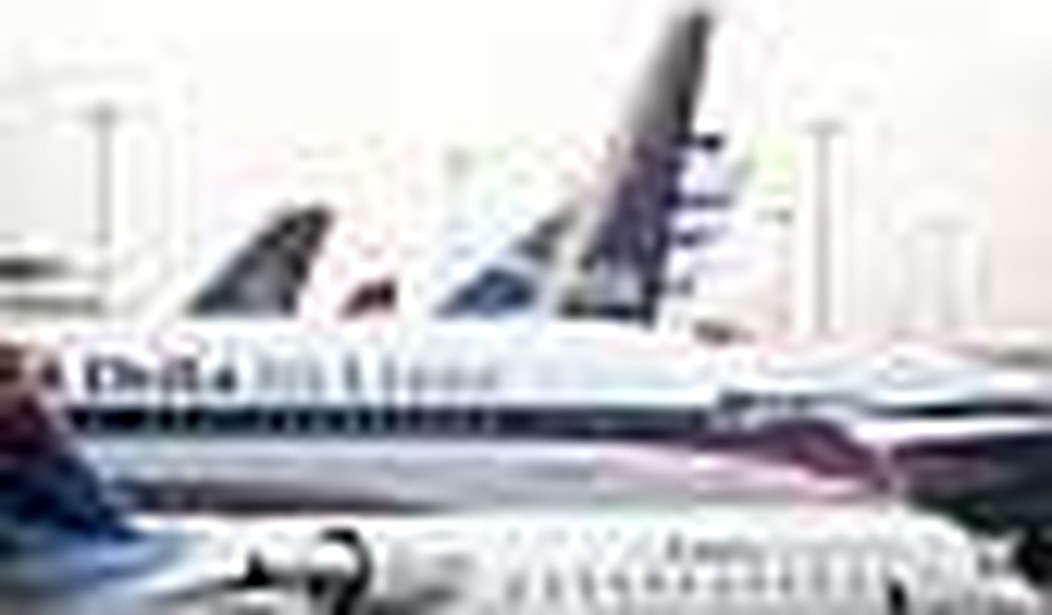Just in time for the holiday delay season and the dire traveling weather, new regulations have been issued by the U.S. Department of Transportation to limit how long people can be “trapped” on an airplane on the tarmac. These regulations have been written thanks to the tendency of some airlines to keep people on their planes, waiting to take off, for ludicrous periods of time.
It’s interesting to see the reaction of the airlines themselves, via their association:
“We will comply with the new rule even though we believe it will lead to unintended consequences — more flights and greater passenger inconvenience. In particular, the requirement of having planes return to the gates within a three hour window or face significant fines is inconsistent with our goal of completing as many flights as possible. Lengthy tarmac delays benefit no one,” said ATA president and CEO James C. May.
Anyone who has experienced sitting in an airplane on the tarmac for more than a couple of hours will wonder how this rule could possibly make things worse. The regulations also add that people should be provided with basic necessities when they are stuck on an airplane.
In 2007, due to bad weather, I was stuck waiting on the tarmac for takeoff. Fortunately, my wife and I were rather patient, as we were returning from our honeymoon. We had already waited in the terminal for longer than we expected. As our flight got delayed more and more, the cafes, bars, and restaurants began to close. By the time we finally boarded it was around 11 p.m. Of course, to us boarding meant taking off, and we were relieved to be finally getting home. But not in this case; we finally took off around 1 a.m. in the morning.
The airline, US Airways, was actually quite good about it and served drinks to us all. When it was clear we couldn’t take off, a catering truck was sent out to replenish our supplies and we were offered more refreshments.
What was most interesting, and from the reports I have read probably unusual, is that as we approached the two-hour mark the captain asked if we wanted to taxi back to the terminal or wait on the aircraft. He reminded us that he would lose his place in the takeoff queue if we did go back and that instead of being fourth in the queue we’d end up being 30th. He actually took a vote of the passengers. No one wanted to go back to the terminal, so we all waited.
It seems from the horror stories one reads that not every pilot or airline is as reasonable. Asking anyone to sit in a cramped seat for over three hours on the ground without refreshments or toilet facilities is clearly unreasonable unless you are willing to refund the cost of the flight. Some airlines seem to think they can treat their passengers like cattle and do with them what they wish once on the airplane.
This is clearly a case of the airlines bringing regulations down on themselves, despite repeated warnings that continuing such behavior would have this result.
This year through Oct. 31, there were 864 flights with taxi out times or flight diversions of three hours or more, according to the Bureau of Transportation Statistics. Transportation officials, using 2007 and 2008 data, said there are an average of 1,500 domestic flights a year carrying about 114,000 passengers that are delayed more than three hours.
You have to wonder whether the $27,500 fine per passenger is enough to dissuade this sort of thing from happening too often. As with any business, airlines will consider the costs of going back to the gate versus getting a fine. The fewer the passengers on the plane, the more likely they will just go with the fine. So if you are in this situation you probably want to be on a large flight that is full.
The new regulations do not apply to foreign-flagged carriers that do not fly between two U.S. cities. This sort of reform has been threatened before and always failed in the face of strong opposition from the airlines. Then again their case suffers greatly when considering cases like the following one:
Last month, the department fined Continental Airlines, ExpressJet Airlines and Mesaba Airlines $175,000 for their roles in a nearly six-hour tarmac delay in Rochester, Minn. On Aug. 8, Continental Express Flight 2816 en route to Minneapolis was diverted to Rochester due to thunderstorms. Forty-seven passengers were kept overnight in a cramped plane amid crying babies and a smelly toilet because Mesaba employees refused to open a gate so that they could enter the closed airport terminal.
We shall have to wait and see if the regulations will have their desired effect, as regulations not properly crafted have a tendency to backfire. If all goes well, airlines will think twice before trapping passengers in flying subway trains for long periods of time. Then again the airline association had this to say:
David Castelveter, a spokesman for the association, declined to say whether the industry would mount a legal challenge to the federal rules. Castelveter said the association is thoroughly reviewing the 81-page document. “We will comply with the rule, but we cannot rule out our legal options,” he said.
Still we can be assured that the airlines’ lawyers will be earning their salaries figuring out how to avoid the regulations as much as possible. A challenge in court may hold off the regulations for years if done correctly.
And consumers will not be happy they can still spend up to three hours on the tarmac. In the summer three hours can be far too long. However, this is a good start to help persuade domestic airlines to treat their passengers better.









Join the conversation as a VIP Member